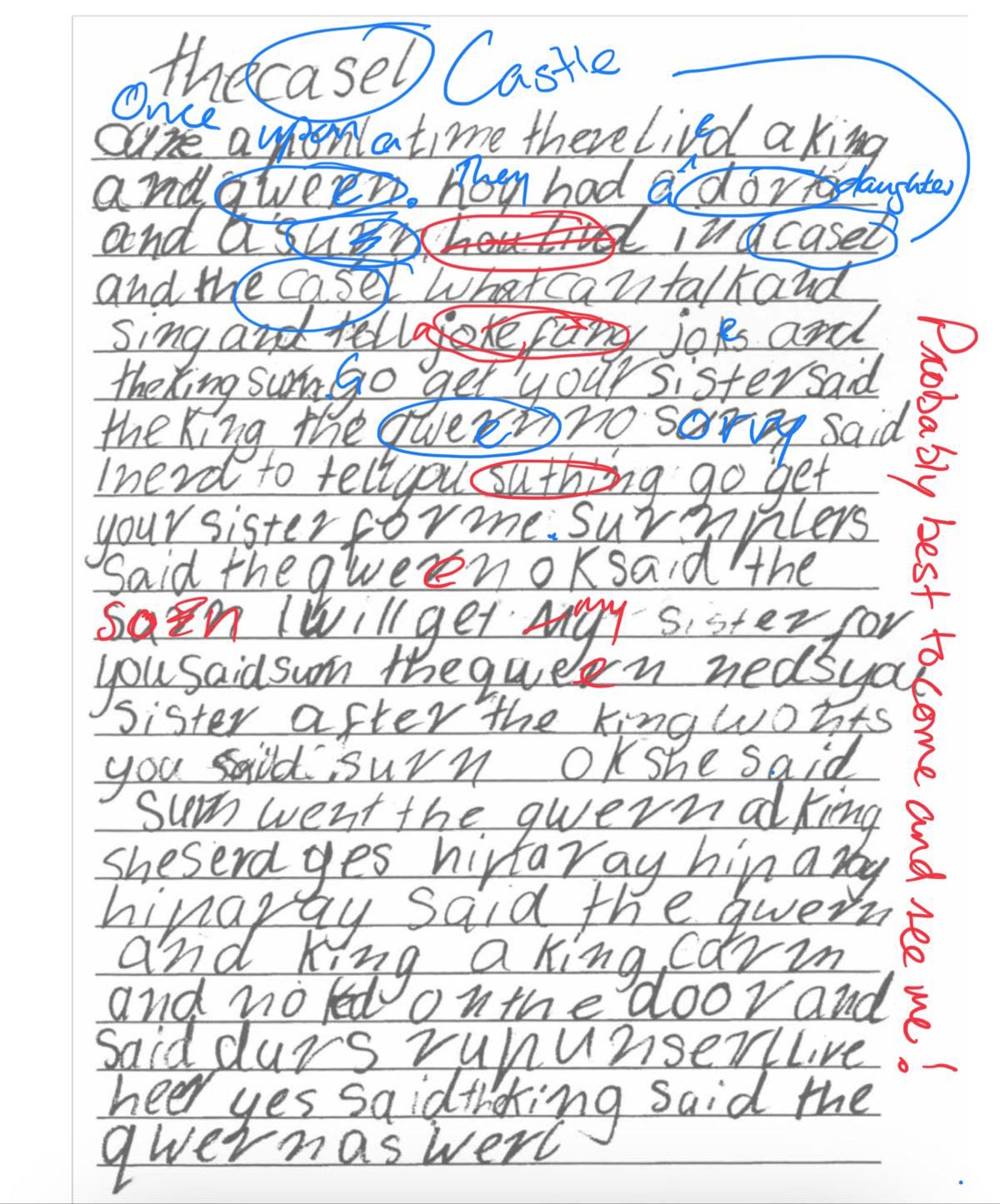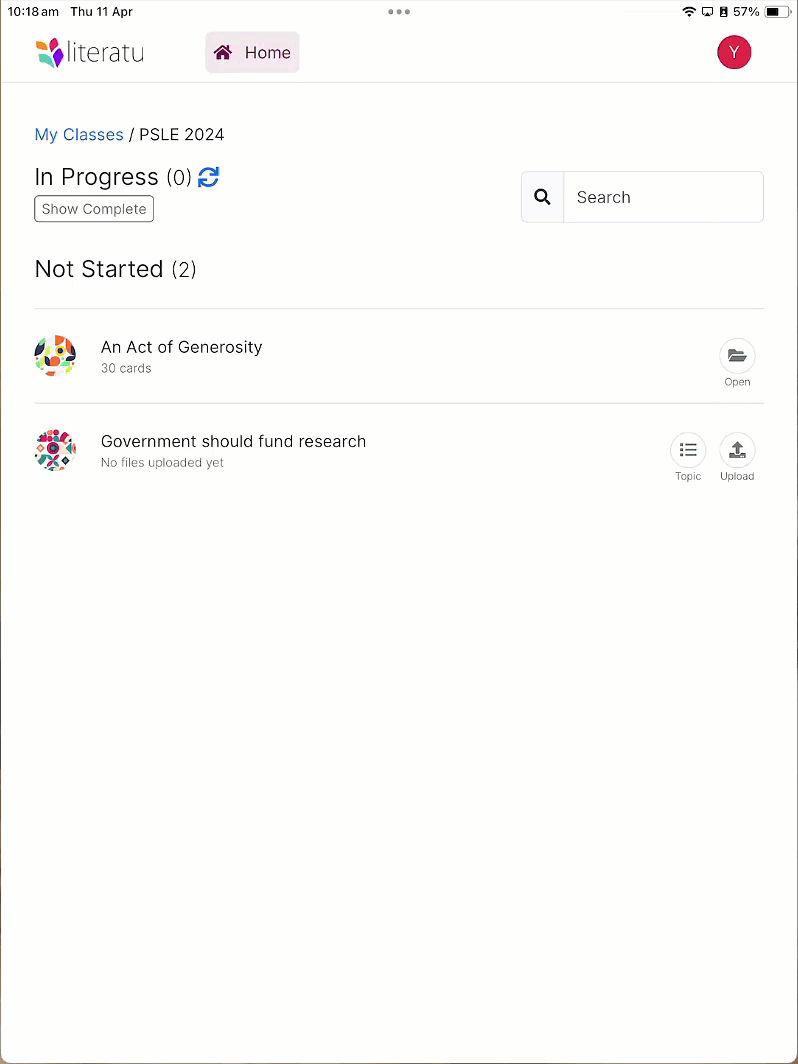Teachers spend so much time outside the classroom grading and creating feedback. Many times you wonder where to start giving feedback and within seconds wonder where to stop applying more effort. One of my son's actually enjoyed writing half an essay and then letting his teacher complete it!
With the emergence of AI, there is a another way to get the feedback and grading job done, save hours of time, and help students self direct their learning along the way.
Below is a great example of handwriting from a year 4 student. There is a great story trying be told here however there is a lot of work to move this effort along into a better place. Imagine having 30 of these to address. There goes the weekend! I spent 10 minutes on this one and had probably 10-15 more to go. The red pen was never going to be the answer and to re-write the story is another 20 minutes.
Not all handwriting is this challenging, however much of it can be. Time evaporates when challenged with a pile of papers. This example needs a lot of support to get the student improving something... maybe just working on spelling? Let's start there!


Teaching students the basics of English and then how to transition into long form writing is a huge challenge for both students and teachers. Initially, there is much time spent on correction of the the basics of grammar, punctuation and spelling (GPS). Red and or blue pens never really ignite the motivation needed to spark a rewrite. Sprinkling comments in pen into this little example was never going to add enough value for anyone.
What are the options? The marking and feedback hours conundrum (MFC) has been around for a long time now. How can a teacher deal with dozens of student handwritten texts? How can they reduce the time they need to give each student sufficient feedback to hopefully re-engage them to take their next, self-directed steps?
One tragedy of handwriting is the destination thinking that is naturally built into a process. Asking a student to handwrite a text, then top-loading with more handwriting and then expect everyone to do it all again? I't tiring to do this all the time. Fellow teachers agree with me that once the feedback is cast - once a mark is given, there is no student appetite to do it all again. In reality, the last thing a teacher wants is another 35 essays to grade again, many with the same GPS and structural errors as the last version.
Whilst I'm a big fan of the pedagogical benefits of handwriting versus digital, handwriting a text is a destination for a student when it could really be the start of an improvement journey. How do you create an improvement journey from handwritten responses and make it an engaging one?
There are a couple of options I have seen and used.
Option 1 - Take a picture and use marking systems that drop pre-set notes all over a student text. In the hope students will follow the feedback trail, there is no little cognitive load reduction for teachers, just a quicker way to create boilerplate feedback and reduce embarrassing typing and spelling errors.
Option 2 - Digitise the handwriting and draw feedback atop of the text. I tried that in the example above, realising that this is not a time saver and that the feedback was so cluttered that it meant nothing at the end of 20 minutes. Readability suffers.
Neither of these options reduce the cognitive load of a teacher, however they could increase the speed at which a teacher can move through giving feedback. The core problem of re-engaging students to internalise the feedback and then rewrite another draft never gets solved in either of these options. Each handwritten event starts and stops at the same destination..."I'm glad that is over!".
Scribo Vision is here.
Scribo Vision offers an incredible step forwards for teachers and students. It is useful also for parents who want to help to their child with a bit more neutrality and experienced point of reference, well more than "your mum reckons" or "your dad reckons" anyway.
Vision allows students and teachers to take a picture of their handwriting on a phone or tablet. Within 20 seconds, a grade aligned to a rubric is delivered with personal feedback and guidance. Even better is a sentence by sentence walk through of where improvements could be made, offering suggestions and alternatives.
Boom! Hours saved, instant feedback and great data and insights for teachers to work with. Handwritten texts now start the journey towards writing improvement as a continuum. With instant feedback delivered, students are encouraged to have other go. "Just fix paragraph 1?"

Vision has a strong teacher/ student / class / alignment built in, transporting the text collected in Vision across to Scribo. Scribo opens a digital version of the handwriting for each student, highlighting the feedback and guidance. This allows students to continue to enhance their work online. Handwriting is now part of a writing improvement journey as opposed to the unintentional destination it is now. Handwrite your version 1 response then improve your work online.
Of course teachers could opt to simply use Vision without stepping the process up and into Scribo. Our keen writer above would be happy with Vision feedback as a self-directed guide to rewrite the text. I would still use Scribo to record audio feedback that Vision will deliver. Audio feedback in this case is the best way.
Take a look into Scribo Vision. Their B2B version can be trialled by schools. There is a B2C version available for parents whose child is sitting for the PSLE in Singapore this year. Head to https://about.literatu.com/vision and register for a trial.